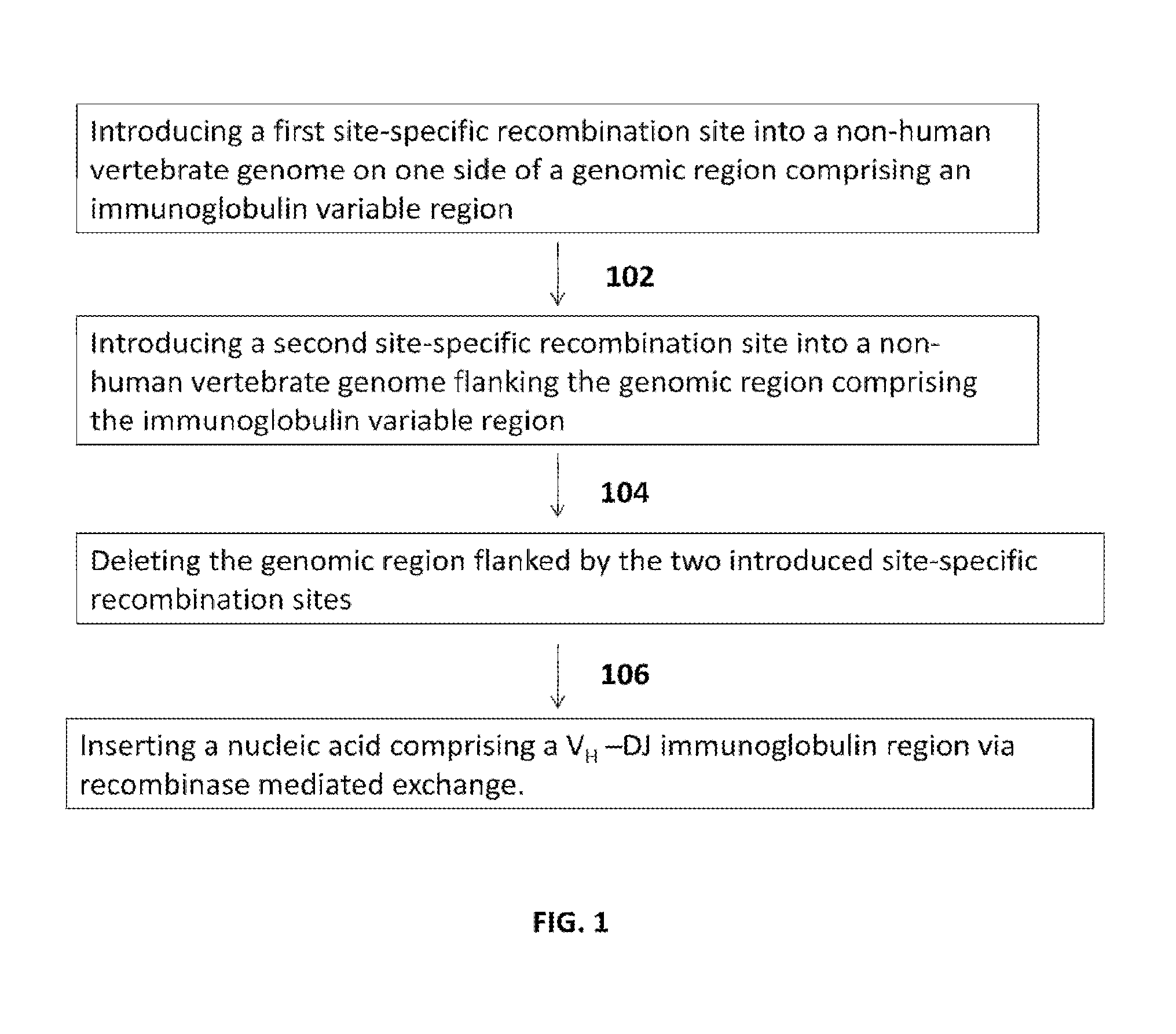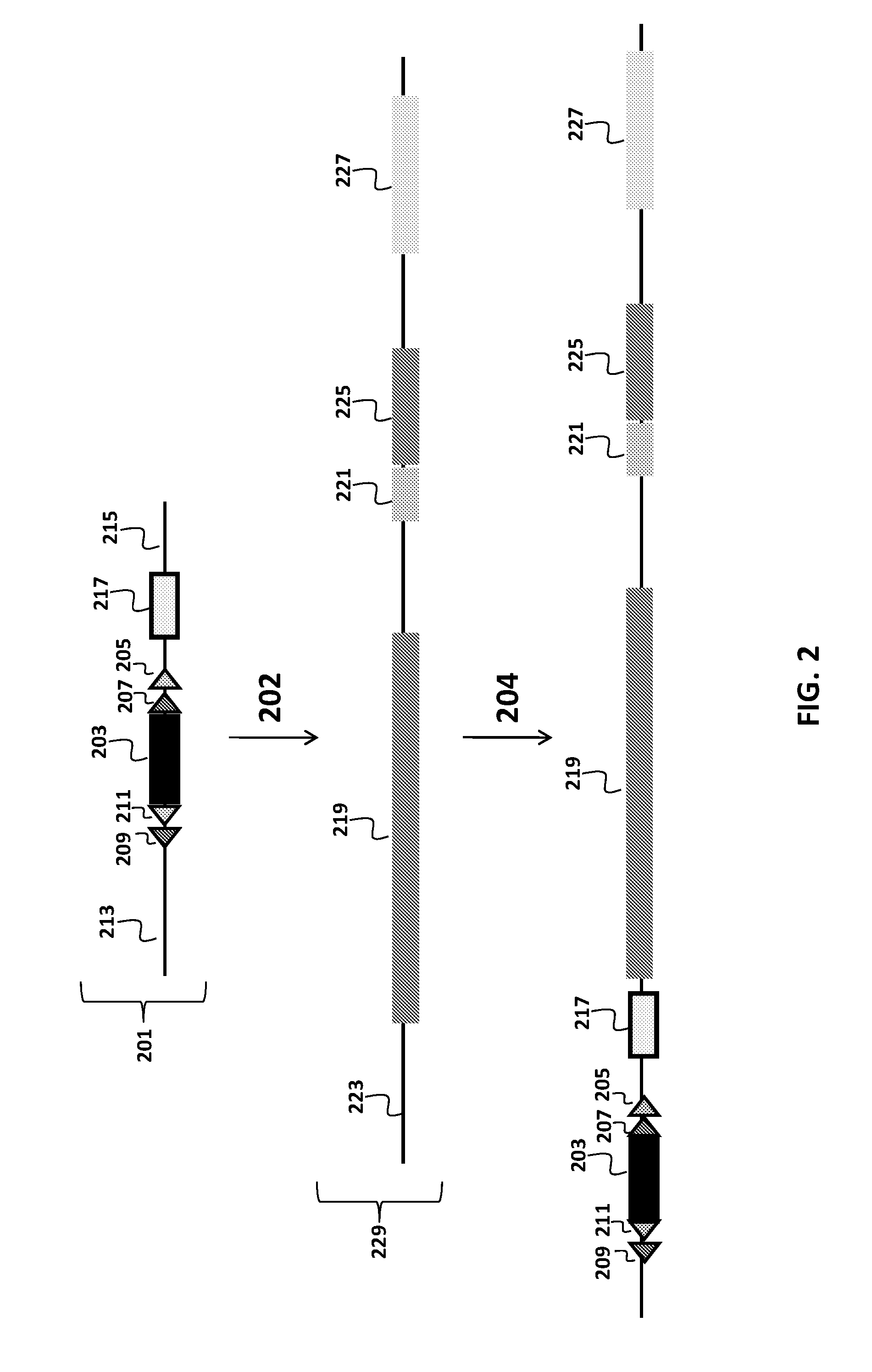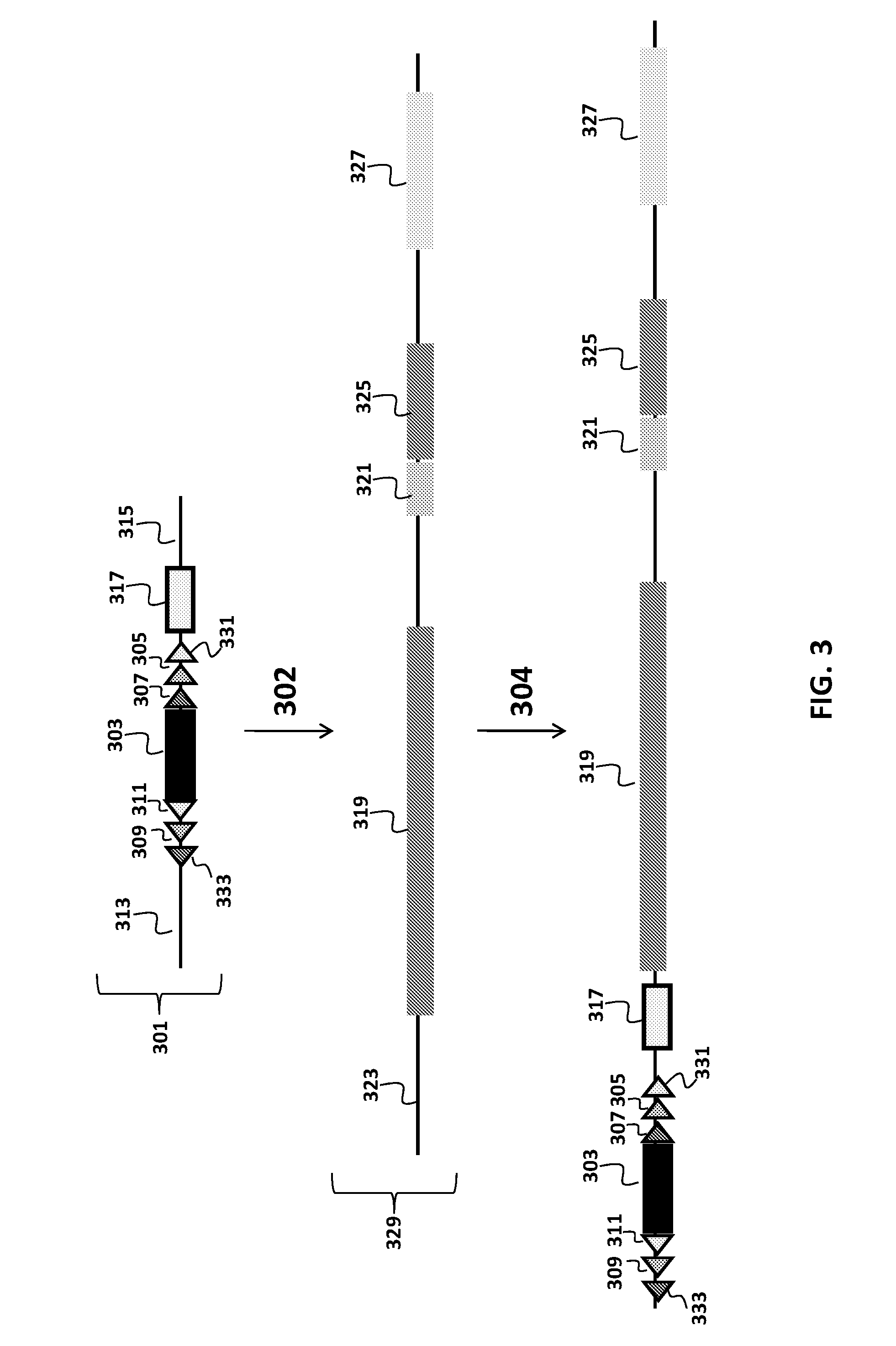Transgenic animals and methods of use
a technology of transgenic animals and methods, applied in the field of transgenic vertebrates, can solve the problems of time-consuming and expensive creation, low antibody production rate, mouse coding sequences that have been “swapped” with human sequences,
- Summary
- Abstract
- Description
- Claims
- Application Information
AI Technical Summary
Benefits of technology
Problems solved by technology
Method used
Image
Examples
example 1
Introduction of a Partially Human Immunoglobulin Region into the VH Gene Locus of a Mouse Genome
[0087]An exemplary method for replacing a portion of a mammalian genome with partially human immunoglobulin region is illustrated in FIGS. 1-6. FIG. 1 shows a flow chart illustrating the different steps of this exemplary aspect of the methods of the invention. This method provides introducing a first site-specific recombination site into the mammalian genome, which may be introduced either 5′ or 3′ of an endogenous VH region of the mammalian genome. This is then followed by the introduction 102 of a second site-specific recombination site into the mammalian genome, which in combination with the first site-specific recombination site flanks the endogenous immunoglobulin region. The flanked endogenous region is deleted 104 and a synthetic nucleic acid comprising both human and non-human sequences is introduced 106 via recombinase mediated exchange.
[0088]An exemplary method illustrating the ...
example 2
Introduction of a Partially Human Immunoglobulin Region into a Mouse Genome
[0095]In certain aspects, the partially human immunoglobulin region will comprise the elements as described in Example 1, but with additional sequences e.g., sequences strategically added to introduce additional regulatory sequences, to ensure desired spacing within the introduced immunoglobulin region, to ensure that certain coding sequences are in adequate juxtaposition with other sequences adjacent to the replaced immunoglobulin region, and the like. FIG. 7 illustrates the introduction of a second exemplary partially human sequence to the modified mouse genome as produced in FIGS. 2-5 and described in Example 1 above.
[0096]A site-specific targeting vector 729 comprising the partially human immunoglobulin region 710 to be introduced to the mammalian host genome is introduced 702 to the genomic region 701 with the deleted endogenous immunoglobulin region comprising the site-specific recombination sites (709,...
example 3
Introduction of a Partially Human Immunoglobulin Region into the Immunoglobulin Heavy Chain Gene Locus of a Mouse Genome
[0098]A method for replacing a portion of a mammalian genome with partially human immunoglobulin region is illustrated in FIG. 8. This method used introduction of a first site-specific recombination site into the mammalian genome followed by the introduction of a second site-specific recombination site into the mammalian genome. The two sites flanked the entire cluster of VH, DH and JH region gene segments. The flanked endogenous region was deleted using the relevant site-specific recombinase, as described herein.
[0099]The targeting vectors 803, 805 employed for introducing the site-specific recombinase sites on either side of the VH, DH and JH region gene segment cluster in the wild-type mouse immunoglobulin region 801 included an additional site-specific recombinase site that has been modified so that it is still recognized efficiently by the recombinase, but wil...
PUM
| Property | Measurement | Unit |
|---|---|---|
| Recombination enthalpy | aaaaa | aaaaa |
Abstract
Description
Claims
Application Information
 Login to View More
Login to View More - R&D
- Intellectual Property
- Life Sciences
- Materials
- Tech Scout
- Unparalleled Data Quality
- Higher Quality Content
- 60% Fewer Hallucinations
Browse by: Latest US Patents, China's latest patents, Technical Efficacy Thesaurus, Application Domain, Technology Topic, Popular Technical Reports.
© 2025 PatSnap. All rights reserved.Legal|Privacy policy|Modern Slavery Act Transparency Statement|Sitemap|About US| Contact US: help@patsnap.com



